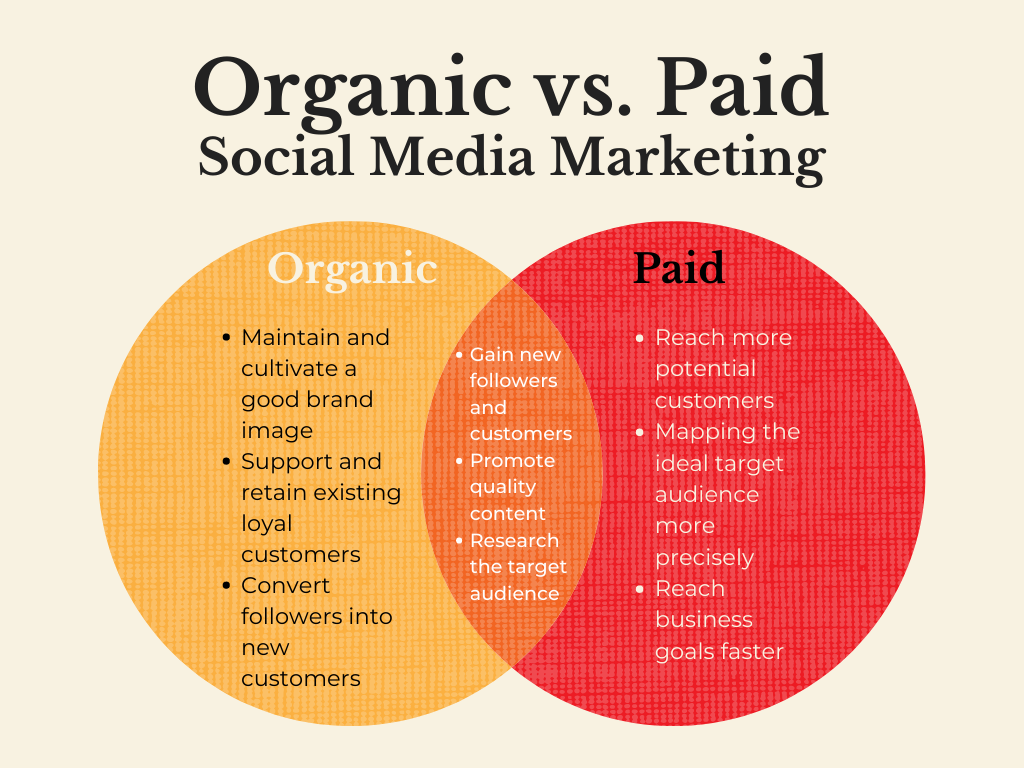Organic vs. Paid Social Media - Which Drives Better Results for Luxury Brands?
Organic earns the right to scale; paid scales what’s earned. For luxury, the winning mix is a calm organic cadence, selective boosting/whitelisting, and paid that respects brand codes. Judge success by MER, cohort LTV and brand search, not CPM alone.

For high‑end brands, social isn’t a tug‑of‑war between organic and paid. It’s a system. Organic earns credibility and community; paid scales the proof. Choosing one over the other is why many luxury plays feel loud but forgettable, or tasteful but slow.
Problem → Treating organic and paid as rivals creates brand whiplash: over‑indexed paid erodes equity, while organic‑only stalls demand and under‑funds growth.
Solution → Build two engines: an Equity Engine (organic) that tells the story calmly and often, and a Performance Engine (paid) that turns proven stories into predictable growth. Connect them with a shared creative system, landing experiences that answer the next question, and a measurement model that values loyalty alongside ROAS.

What each channel is for (the luxury lens)
Organic is where heritage lives. It proves taste, care and community through regular editorial stories, behind‑the‑scenes craft, and creator moments that feel natural. Paid is distribution at will. It reaches new audiences, sequences proofs, and turns curiosity into action without asking the brand voice to shout.
When organic outperforms paid
Organic wins when credibility is the task: launching a new aesthetic direction, introducing long‑form craft, building repeat engagement around rituals and care, or nurturing local communities and boutiques. It also shines during sensitive moments, heritage anniversaries, atelier features, stewardship initiatives—where the tone must be earned, not bought.
When paid outperforms organic
Paid wins when reach and control matter: opening new markets, launching collections on a schedule, harvesting intent around seasonal gifting, or scaling a hero SKU. It’s also essential for testing message variants quickly and for retargeting with precise answers to FAQs that organic raised.
How organic and paid compound together
Use organic to find stories that resonate, then Spark/Boost or whitelist the winners to reach similar audiences without changing tone. Carry the same first frames into paid; route paid clicks to landing pages that echo the claims users just saw. Feed learnings both ways: search queries inform new organic posts; organic comments surface FAQs for retargeting creative.
Creative differences that keep equity intact
Organic reads like a magazine: calmer pacing, fewer overlays, more conversation in captions. Paid reads like a trailer: one idea, one claim, one proof, fast. Both should open on finish or movement, use subtitles, and avoid status‑signalling language. Keep creator partnerships disclosed and within brand codes.
Budgeting framework by brand maturity
Treat budgets as a moving split rather than a fixed ideology. Ranges below assume consistent organic publishing and premium creative craft; adjust for category dynamics and margin.
Launch / Early growth: 60–70% paid, 30–40% organic (creator fees + production). Focus on reach, rigid sequencing, and brand‑safe prospecting.
Scale / Acceleration: 50–60% paid, 40–50% organic. Weight spend to proven stories; boost top organic and expand creators.
Established / Equity first: 40–50% paid, 50–60% organic. Emphasise loyalty, clienteling content and selective paid around big moments.
Measurement that respects equity (beyond CPM)
Track what the business feels: blended MER, AOV, return rate and cohort LTV. For organic, watch saves, profile taps, replies and creator comment quality. For paid, judge CAC and ROAS in context of repeat rate and branded search lift. Attribute with discipline, but resist last‑click thinking.
A simple playbook you can run this quarter
• Publish 3× weekly organically: one craftsmanship post, one lifestyle/usage, one service/care.
• Every Friday, shortlist two organic winners → Boost/Spark for 7–10 days; keep tone identical.
• Build two paid sequences: Prospecting (finish → proof) and Retargeting (FAQ → reassurance).
• Mirror claims on landing pages; add delivery dates, returns and appointment options.
• Review MER, saves, branded search and repeat rate monthly; reallocate to the combos that compound.
Pros & cons (organic vs. paid for luxury)
Organic — Pros: credibility, community, story depth, compounding engagement. Cons: slower scale; needs editorial discipline and continuity.
Paid — Pros: controllable reach, speed, structured testing, predictable scaling. Cons: can feel transactional if tone drifts; requires data and landing‑page rigor.
FAQs
What’s the right organic vs. paid split for a luxury brand?
Start with 60/40 paid:organic at launch, move toward 50/50 as organic compounds and creators mature. Established houses often run 40/60 with paid concentrated around key moments.
Should we ever stop boosting organic?
Boost only what performs natively. If a post didn’t earn saves or strong completion, fix the creative first; don’t pay to force it.
Is it worth running paid if we’re supply‑constrained?
Yes—use paid to shape waitlists, appointments and clienteling rather than pushing immediate sales. Keep frequency civil and copy precise.
Do we need separate assets for organic and paid?
Often not. Shoot once; cut calmly for organic, then tighten the first frames for paid. Keep tone and colour consistent across both.
How do we prove organic helps paid?
Watch branded search, comment quality, and conversion rate on exposed cohorts. Paid efficiency typically rises when organic runs consistently with the same story.
Conclusion
Luxury doesn’t pick sides. It builds equity in public, then scales it with precision. Treat organic and paid as one system—shared creative, aligned landing experiences, and measurement that respects lifetime value, and results will compound.




